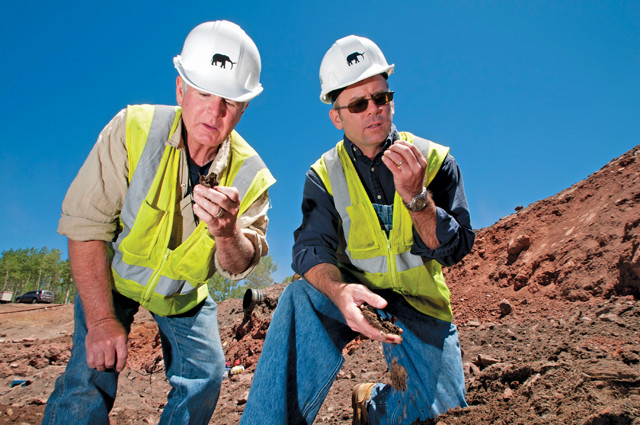
by Mary Caperton Morton Wednesday, December 9, 2015

Brown and Nash check the soil for organic matter. Credit: ©Denver Museum of Nature & Science.
Why did so many animals end up buried at the Snowmastodon site? What happened to them? “We really struggled to figure out why there were so many bones found in this location,” says Ian Miller, chair of earth sciences and the paleobotanist at the Denver Museum of Nature & Science who co-led the Snowmastodon Project. “Was it some kind of deathtrap? Or was there a deadly catastrophe like an earthquake or a landslide?”
Once the team started deciphering the ages of the sediments using thermoluminescence dating, they found the layers spanned more than 85,000 years, and the more catastrophic explanations for the boneyard fell out of favor, Miller says. It seemed that the bones just accumulated over time due to natural deaths and predation. “This was a well-frequented watering hole for many tens of thousands of years. Animals often seek out water when they’re dying, and predators often hunt near watering holes where they know prey is plentiful.”
Over time, a lot of bones can pile up if the preservational environment keeps them from decaying. “If you have one animal dying here every 10 years, over 85,000 years, that’s 8,500 animals,” he says. “We now think that we have this incredible assemblage simply because this little pond persisted in this unique setting for such a long time.”
© 2008-2021. All rights reserved. Any copying, redistribution or retransmission of any of the contents of this service without the expressed written permission of the American Geosciences Institute is expressly prohibited. Click here for all copyright requests.